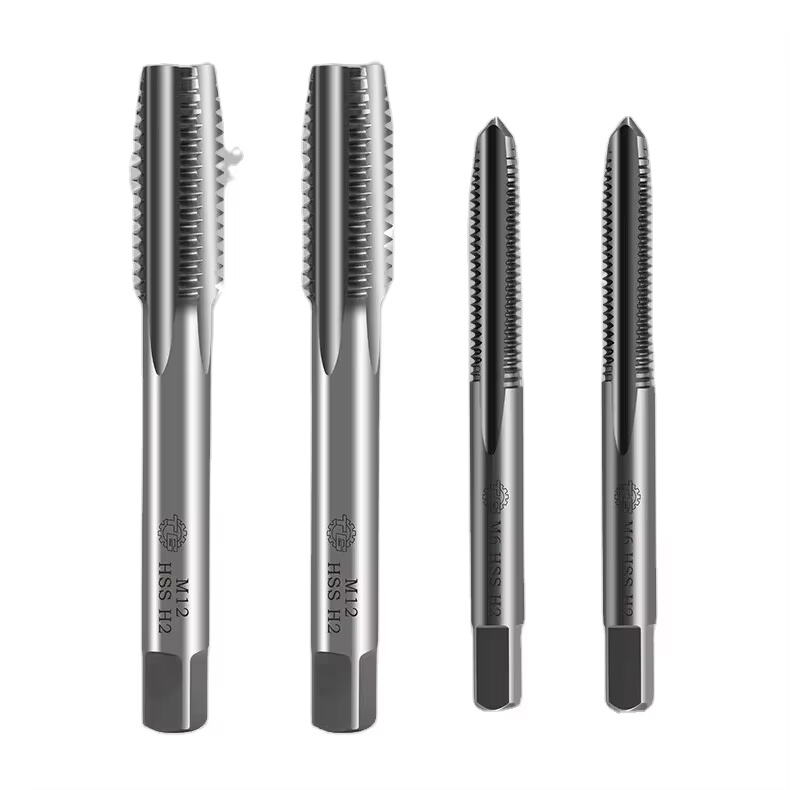Mastering the Art of Thread Creation in Manufacturing
Thread tapping stands as one of the most critical operations in machining and manufacturing processes. The precision and quality of threaded holes can make or break the integrity of assembled components. Whether you're working on a small workshop project or overseeing industrial production, understanding the nuances of thread tapping is essential for achieving consistently excellent results.
In today's manufacturing landscape, thread tapping requires both technical expertise and practical knowledge. The process involves creating internal threads by cutting or forming material inside a pre-drilled hole, demanding attention to detail and proper technique. Let's explore the comprehensive approach to mastering thread tapping and ensuring optimal outcomes in your projects.
Essential Tools and Equipment for Thread Tapping
Selecting the Right Taps
The foundation of successful thread tapping begins with choosing appropriate taps for your specific application. Taper taps, plug taps, and bottoming taps each serve distinct purposes in the thread creation process. Taper taps, with their gradual cutting edges, are ideal for starting threads, while plug taps offer consistent cutting throughout the hole. Bottoming taps complete threads to the bottom of blind holes, ensuring full thread engagement.
Material considerations play a crucial role in tap selection. High-speed steel (HSS) taps work well for general purposes, while carbide-tipped taps excel in harder materials. Coated taps, featuring TiN or other surface treatments, provide extended tool life and improved chip evacuation during the thread tapping process.
Threading Equipment and Accessories
Beyond the taps themselves, successful thread tapping requires proper supporting equipment. Tap guides ensure straight alignment, while threading lubricants reduce friction and heat generation. Modern CNC machines often incorporate synchronized threading cycles, but manual tapping remains relevant for many applications, necessitating quality tap wrenches and holders.
Measuring tools, including thread gauges and micrometers, help verify thread accuracy throughout the process. Digital measurement systems provide precise data for quality control, ensuring threads meet specified tolerances and standards.
Preparation and Planning for Thread Tapping
Hole Preparation Guidelines
Proper hole preparation significantly impacts thread tapping success. Calculate drill sizes accurately based on the desired thread specifications, considering factors like material properties and required thread percentage. Surface finish of the pre-drilled hole affects thread quality, making clean, burr-free holes essential.
Center drilling helps establish precise starting points for larger holes, while proper depth calculations ensure sufficient thread engagement. Consider using stepped drilling techniques for larger diameter holes to maintain accuracy and reduce cutting forces during thread tapping.
Material-Specific Considerations
Different materials demand varying approaches to thread tapping. Aluminum requires higher cutting speeds but lighter pressure, while stainless steel needs slower speeds and robust lubrication. Understanding these material-specific requirements helps prevent tap breakage and ensures clean thread formation.
Heat treatment status, hardness levels, and material composition all influence tapping parameters. Adjust cutting speeds, feed rates, and lubrication strategies accordingly to optimize the thread tapping process for each material type.

Executing the Thread Tapping Process
Proper Tapping Technique
Maintaining proper alignment throughout the thread tapping operation is crucial. Start with the appropriate tapping sequence, using taper taps for initial thread cutting in through holes. Apply steady, consistent pressure while maintaining alignment with the hole axis. Regular backing out helps clear chips and prevents tap binding.
Monitor cutting resistance and adjust technique accordingly. Excessive force might indicate incorrect hole size or improper lubrication, while inconsistent resistance could suggest alignment issues or material variations.
Common Challenges and Solutions
Thread tapping occasionally presents challenges that require immediate attention. Chip management proves critical, especially in blind holes where debris accumulation can lead to tap breakage. Implement regular backing out cycles and ensure adequate lubrication flow to maintain clean cutting action.
Address alignment issues promptly by using guides or fixtures when necessary. Temperature control through proper cutting speeds and lubrication helps maintain dimensional stability and prevent tap wear. When encountering unusual resistance, investigate rather than forcing the tap, potentially saving both tool and workpiece.
Quality Control and Thread Verification
Measurement and Inspection Techniques
Implement comprehensive inspection procedures to verify thread quality. Use thread gauges to check pitch diameter and ensure proper fit with mating components. Surface finish inspection helps identify potential issues with cutting parameters or tool wear. Document measurements for quality assurance and process improvement.
Modern measurement systems offer advanced capabilities for thread inspection, including profile analysis and dimensional verification. Regular calibration of measuring equipment ensures accurate results and consistent quality control.
Troubleshooting and Optimization
Analyze thread quality data to identify patterns and opportunities for process improvement. Address common issues like stripped threads, improper depth, or dimensional variations through systematic problem-solving approaches. Consider implementing statistical process control for high-volume production environments.
Regular tool inspection and maintenance help prevent quality issues before they occur. Document successful parameter combinations for different materials and applications, building a knowledge base for future operations.
Frequently Asked Questions
What causes tap breakage during thread tapping?
Tap breakage typically results from several factors, including incorrect hole size, misalignment, inadequate lubrication, or excessive cutting speed. Proper preparation, technique, and maintaining sharp tools significantly reduce breakage risk.
How do you determine the correct tap drill size?
Calculate tap drill size using thread percentage charts or formulas specific to the thread type and material. Generally, multiply the major diameter by 0.75-0.85 for 75-85% thread height, adjusting based on material properties and application requirements.
What's the best lubricant for thread tapping?
The optimal lubricant depends on the material being tapped. Sulfur-based cutting oils work well for steel, while aluminum-specific lubricants prevent galling. Synthetic cutting fluids offer excellent cooling and lubricity for various materials.


